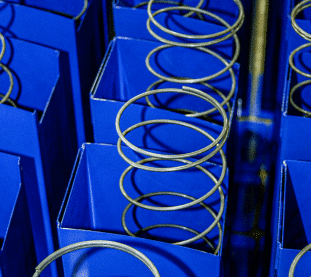
Ever wondered how all the tools and utensils you use every day are made?
Metal Fabrication results in a variety of items found throughout our everyday lives, from screws keeping our furniture together to our toaster to the car we drive to get to work.
Metal fabrication is an important part of the manufacturing process that creates all kinds of products we wouldn’t be able to live without. We rely on the metal fabrication to keep most of our businesses and homes running.
If you think about it, metal fabrication is behind a whole lot of useful items, some of these may be things we use in our personal lives and a lot of them are parts or tools that are used to make all kinds of other things.
Here are just a few examples:
Demand for metal fabrication continues to grow as metal fabricators specialize and invest in new skills and technologies to maximize their opportunities for growth.
Sheet metal fabricating is the process of manufacturing products from sheet metal. Metal fabricators shape metal into a wide range of products. Metal manufacturing can be found in mass productions as well as in custom metal sheet products.
The metal manufacturing process starts with sheet metal that is usually about a quarter of an inch thick or less. These metal sheets are pliable enough to be able to be manipulated into various shapes.
If your project requires metal fabrication, you will likely have heard all kinds of new words being thrown around to describe the different processes and ways of working with metal.
Metal fabricators will use a variety of techniques to cut, fold or shape sheet metal into a finished product. They may also create new custom parts using any combination of the main metal fabrication processes.
These different techniques help metal fabricators get a sheet of metal into the right shape for your project.
Metal fabricators are highly skilled specialists that have been trained to cut and work this metal with precision and skill to achieve the right results. Just have a look at what the skilled team at Midland Metal Products can do for your project.
Almost all metal manufacturing falls within these three primary categories:
Industrial fabrication is the making of parts and pieces that are used in industrial equipment and tools. These tools are then used to manufacture consumer goods.
Machinery and heavy equipment all need parts made with metal and industrial metal fabrication plays a key role in modern-day manufacturing.
Some key manufacturing products that metal fabricators produce for the industrial sector are:
The types of industries that typically make use of industrial metal fabrication are the water treatment, alternative energy, automotive, and engineering industries.
Commercial metal manufacturing is primarily focused on producing products that are used in commercial buildings such as restaurants, stores, malls, and even parks.
Decorative or more ornamental metal work is often included in this category and is used to add to the aesthetic of a commercial building.
Commercial metal fabrication includes making parts that are often smaller and more precise than you would see in industrial and structural metal manufacturing.
Key commercial products include:
Anything that is needed as part of the construction and building industry is supplied through structural metalwork. Structural metal fabricators will create metal components that are needed to complete shops, high-rise buildings, and even your house. These projects require high-strength structural metal such as steel that is used to form the structural foundations of a building.
The end products made by structural metal engineering are:
Whether industrial, structural, or commercial, metal manufacturing follows several processes from design to finish. Many metal fabrication projects go through multiple processes before completion. Even products that may seem easy to make can go through multiple steps beyond just cutting or shaping.
From the design phase to the completion of a functional product, most metal fabrication projects will follow these steps:
Metal fabricators can use a few different metals for metal fabrication and metal parts fabrication can be done with a broad range of metals and their alloys. Sheet metals are most commonly used in the metal manufacturing process, but some types may start in the form of pipes, bars, or tubes.
The most common metal types used in metal fabrication are:
While most metals can undergo some kind of fabrication process, the suitability of metal for a project will depend on the thickness, pliability, and softness of the metal.
Aluminum is a more pliable metal than steel so the sheet metal fabricating process would look different for the two.
Industries Where Metal Fabrication is Used
Sheet metal manufacturing and metal fabrication serve a purpose across many industries and the products it produces are wide and varied. The versatility of metal fabricated products is in the fact that most products are created as tools and parts that can be used in many different applications within the modern world.
Some of the industries using metal fabrication are:
The applications for metal fabrication and metal engineering are far-reaching, from the foundations of your city’s high rises to the tools used to make the agricultural machinery essential to the food supply chain, right down to the cutlery you use to eat your meals.
These products and perhaps the ones your business needs, all require a level of skill and expertise to ensure they are well professionally and precisely manufactured.
Midland Metal Products has been in the metal fabrication business for over 95 years providing quality metal manufacturing expertise in all these work sectors. If you want to transform your ideas into metal, it would be worth your while to contact Midland Metal Products today.
Additional read: Benefits Of Custom Metal Fabrication
Check out our progress in robotics here!